The moment we have all been waiting for is finally here: the Arclight app has arrived! While I will leave descriptions of the back-end of the Arclight app to those who had a hand in its development, in this article I will describe the front-end experience, detailing my initial use and testing of the app. For more information on the development of Arclight, see Derek Long’s in-development preview and Kit Hughes’s articles on the technical method and interpretive framework of Scaled Entity Search (SES). See also, Tony Tran’s Arclight Guide and Eric Hoyt’s article on Teaching with Arclight.
It was with great pleasure that I was able to experiment with Arclight before its official launch. Entering different queries into the search box, I began to think about its potential uses for my own research. My doctoral research examines the constitution of celebrity in Canadian culture, with a special focus on Canadian literary culture. Using the celebrity phenomenon of Leonard Cohen and his multi-decade career as the object of my research, I investigate the construction of celebrity phenomena through various discourses that circulate via diverse media channels and what these discourses (and the tensions between them) can tell us about the changing constitution of celebrity in Canada since the 1960s.
As a foundation to my study of discourses of celebrity in Canada, I am interested in the history of the term “celebrity” within the United States and Canada. For this investigation, Arclight and the Media History Digital Library (MHDL) could be an effective tool in helping me locate starting points to explore its rise in popularity and to compare it with other terms such as “star.” My intent here is not to “find answers” but rather to tap into Arclight’s capacity to highlight trends at a different scale of analysis and to potentially locate points of interest that require closer examination. In this respect, Arclight and its use of SES can be employed as a method of distant reading that identifies broader patterns among texts, and in turn points towards smaller areas in which other types of analysis, including close reading, become useful.
I started by typing the term “celebrity” into the query box at the top left hand of the app, and a chart similar to this one appeared on my screen (default view):
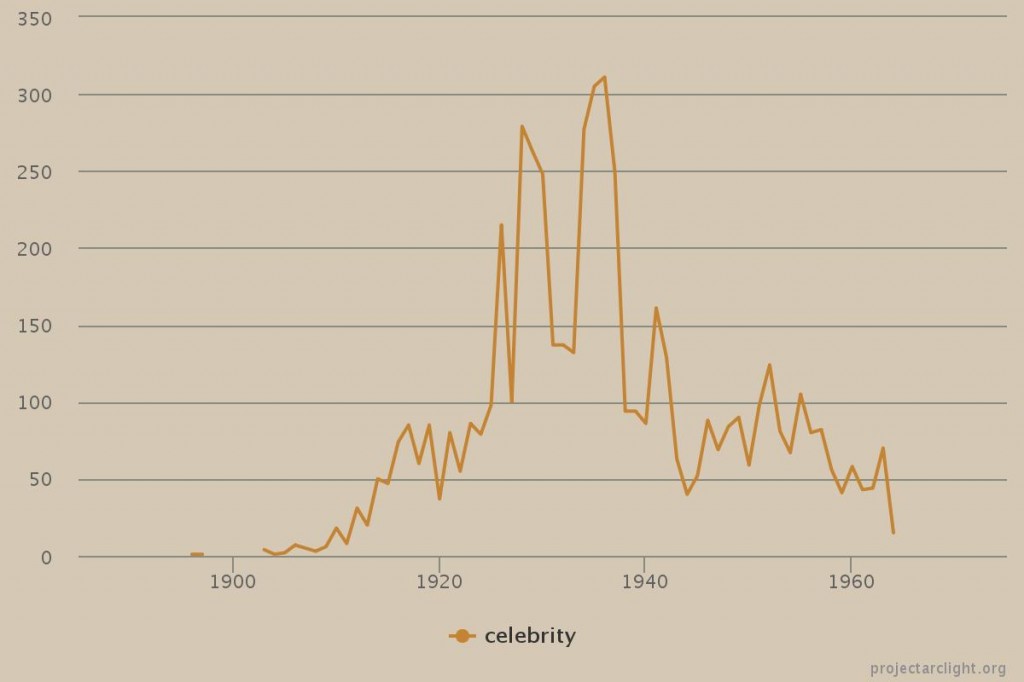
When I hovered my mouse over different points in the chart, I could see that at its peak in 1936 the word celebrity appears on 311 pages. By contrast, in 1888, the word appears on one page. Note that these numbers refer to the amount of digitized pages in which “celebrity” occurs in a given year, not individual mentions.
To the right of the query box is a number of options you can choose, including setting the time frame (calendar icon), filtering by journal (book icon), and changing the view from default to normalized data (percent sign). In the normalized view, instead of graphing the number of pages, the app visualizes the percentage of pages in which the term “celebrity” occurs based on the total number of digitalized pages from that year. It looks like this:

It is important to note that you can filter by journal; however, I chose to search all the digitized pages of the MHDL for this demonstration. I was also curious how the term “celebrity” stacks up against the term “star.” In order to graph multiple queries at once, all you have to do is type another term into the search box and it graphs both terms.
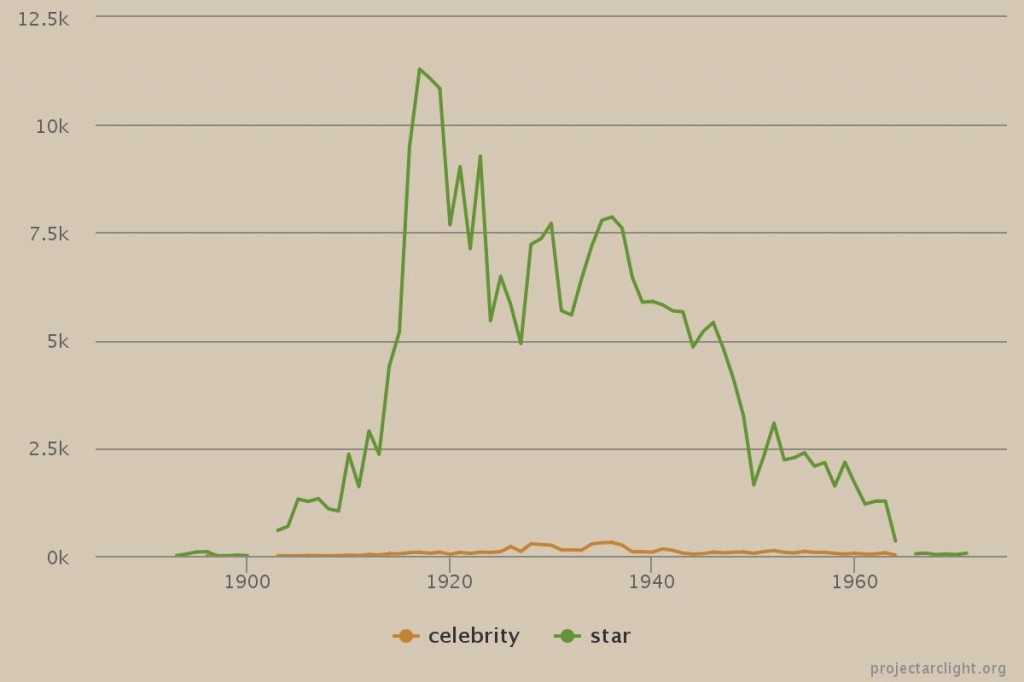
To reiterate, Arclight is a great tool to discover new areas in which to dig deeper, to generate new questions, and to take a step back and consider and explore different scales of analysis. Thus, I am not using Arclight to find solutions but to look at particular issues from a different perspective. As Eric Hoyt emphasizes in “Teaching with Arclight and Poe”: “The line graphs in Arclight are not arguments. They are simply visualizations of how many MHDL pages a given term appears in per year.” The chart above shows how the terms “celebrity” and “star” both trend across the MHDL. However, I cannot take this chart to generalize and argue that “celebrity” was not a commonly used term until recently, or that the preferred term to refer to a famous person was “star.” In the context of the MHDL, the term “celebrity” was not used as often as the term “star.” In order to understand what this means exactly, it is important to shift the scale of analysis and undertake a close reading of the search term in context at a particular point in time. Further, at this scale of analysis, it is very hard to differentiate between false and positive results. To zoom in and examine how the search terms appear in context, you can click at any point in the graph. The page will then redirect you to a list of all the search hits in Lantern, which you can read within the context of the journal. This feature became very useful as I undertook a second set of experimental searches. Before I proceed further, I want to add one more graph where I used four search terms:
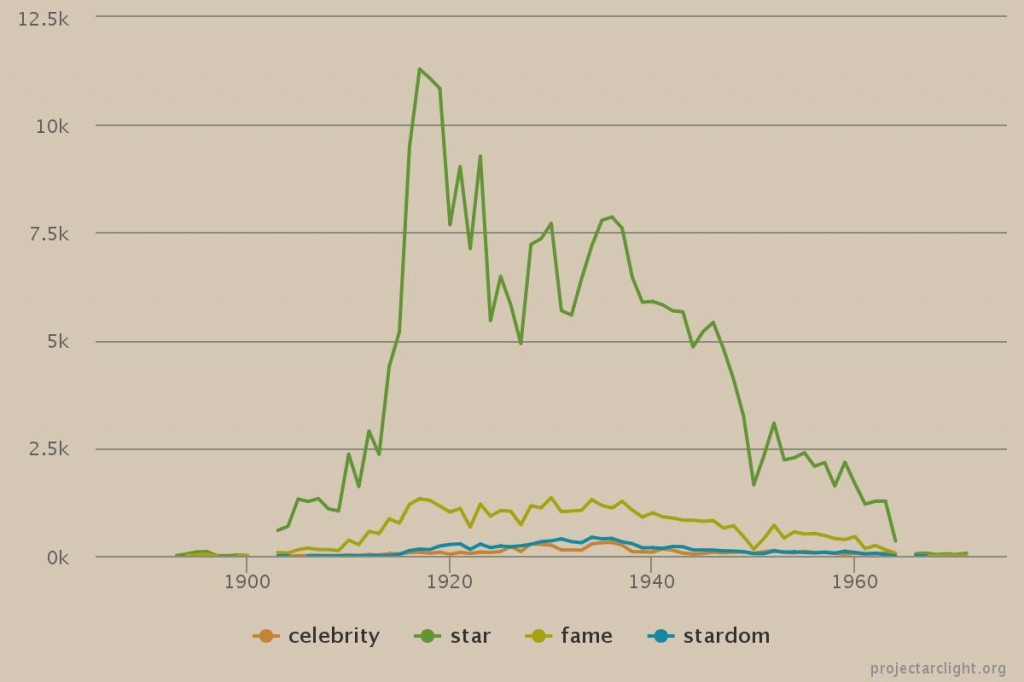
My second search topic relates to a side project and passion of mine: pinball. Since pinball and cinema have a long and intertwined history, I was curious to see how often “pinball” appears in the digitized pages of the MHDL as well as the contexts in which it is referenced.
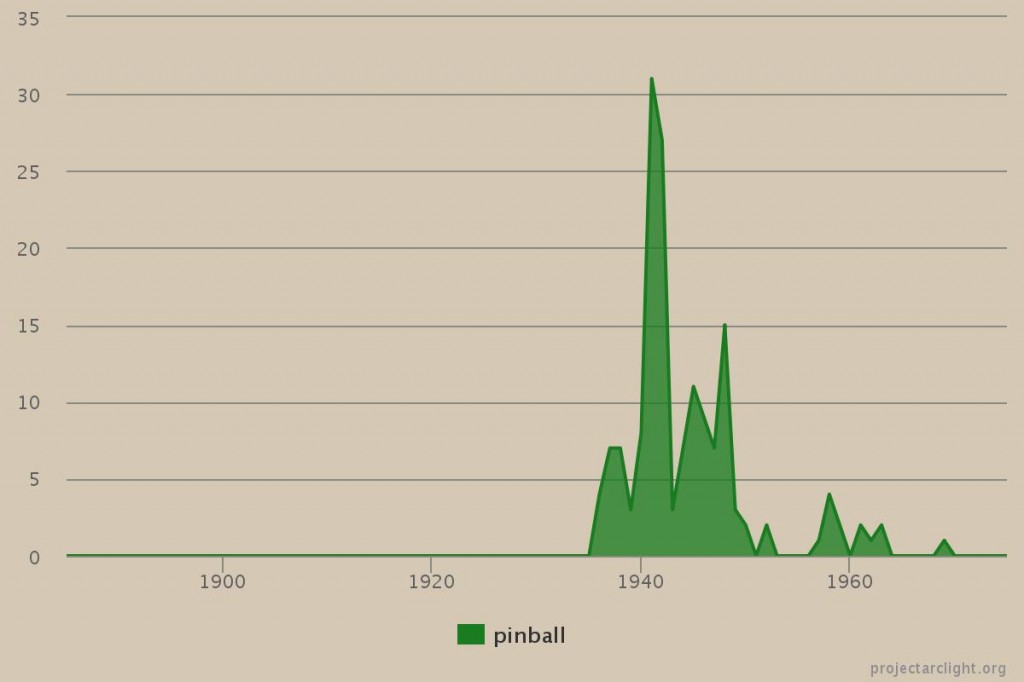
This chart (default, stacked view) shows no mention of pinball in the MHDL until 1936 (4 pages) and that it peaks in 1941(31 pages), dropping off again in the late 1940s. If I want to understand why mentions of pinball peak in 1941 and the contexts in which it occurs, I can begin by clicking on the year of interest. This takes me to Lantern, which lists all the entries in which my search term, pinball, appears. I can then carefully read the page in context. Inspecting the entries for 1941, I discovered letters to the editors about pinball, advertisements utilizing pinball as a means to attract attention, and importantly, many articles regarding the increasing regulation of pinball, including new fees and the outright banning of pinball. As someone intrigued with the history of pinball and the existence of outdated by-laws that continue to be enforced in the United States and Canada (including Montreal), this Arclight search proved very fruitful for me. It allowed me to locate particular areas and time frames in which to focus my research into pinball’s legal history.
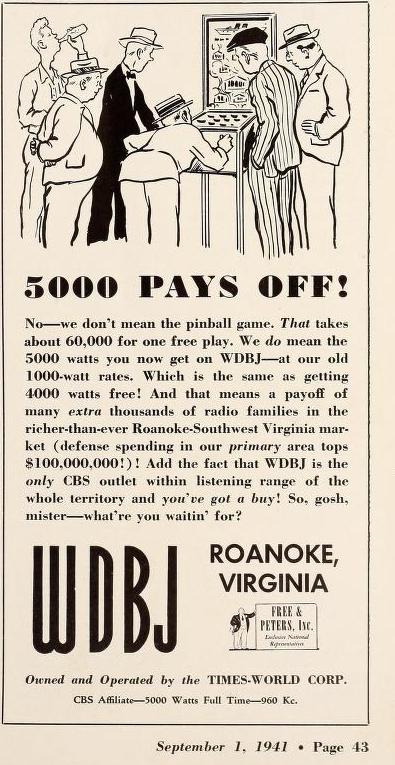
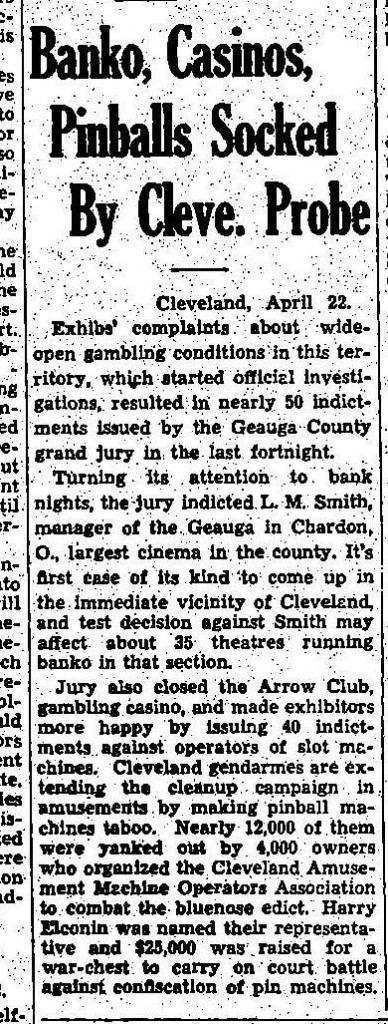
Overall, I found Arclight very intuitive and easy to use, and not to mention fun. But enough about my searches, go try it for yourself!